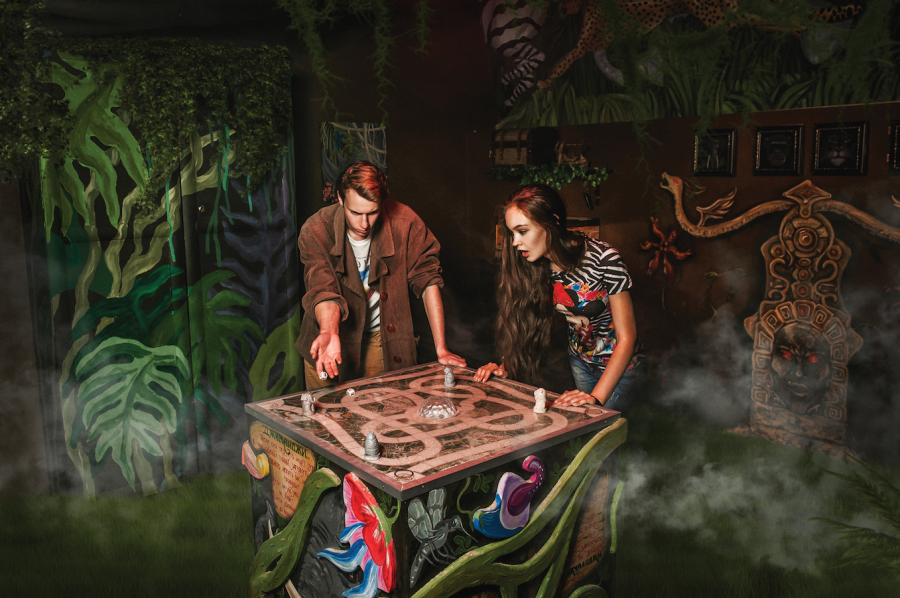Since THE opening OF what many consider to be one of the world’s first escape rooms in 2007 in Japan, escape rooms have become a popular attraction. What was once seen as only a standalone facility, escape rooms are now becoming a revenue-building attraction for family entertainment centers (FECs) around the globe.
“A few years ago, we saw escape rooms starting to pop up in FECs,” says Lloyd Notley, chief marketing officer of escape room franchiser Escapology, headquartered in Orlando. “What we’re finding now is they are a lot more mainstream ... and it’s really starting to create more of an anchor piece of the family entertainment center’s attraction mix.”
“Escape rooms have always been an amazing addition to any entertainment-centered venue,” adds Daniel Stro´nski, marketing, sales and customer service for Escape Room Supplier in Szczecin, Poland. “Everybody loves puzzles—you can easily scale the difficulty level for any age group—and you can make the game as big or small as the place you have for such a game.”
Pick the Right Puzzle
From short, turnkey, autonomous escape rooms to longer traditional attractions requiring more staffing, there are options for FECs to consider when considering adding an escape game to their attraction lineup.
At 814 Lanes and Games in Johnstown, Pennsyvania, Managing Partner Bobby Hogue says his attraction decided to implement two kinds of autonomous escape rooms: a 30-minute, self-guided experience for guests (that quickly resets quickly once they are done), and a 60-minute traditional escape room, both provided by Creative Works. While the 60-minute escape room offers a pre-booked attraction people seek out, Hogue says the 30-minute autonomous option is appealing because it is quicker.
“It’s another attraction that somebody could play while they’re waiting on a Saturday night for a two-hour wait for bowling or a wait to get into the restaurant,” he adds.
Two Bit Circus in Los Angeles—which has a new location slated to open in Dallas this fall—has found shorter is better with its self-guided “story rooms,” which are completely designed and built in-house.
“We don’t want them to stay in there longer; we want them to go out and experience other stuff that we have in the park or the other story rooms as well,” says marketing director Andy Levey. “It’s really important that it’s short and sweet, [and] it doesn’t feel like it’s a chore to those who are going in there. There’s got to be an element where people are able to step into a world and escape the ordinary–that’s our approach to it.”
Make It Immersive
Not only is the length of time an escape room takes important, so is theme, according to Alex Hirschfeld, owner of escape room supplier Indestroom, located in Budapest, Hungary. “When choosing a theme, make it as immersive as possible,” he explains. “Players love it when they are immersed in the plot of the game, to the smallest detail.”
Hirschfeld also suggests FEC owners choose games with a medium to low difficulty level, as those will be best suited for families. Plus, he recommends facility operators research what escape room themes are already in your area. “When choosing an escape game theme, be guided by what game scenarios are not yet nearby,” Hirschfeld adds.
At Kingpin, which operates franchised escape rooms in four of its locations in Australia and one in New Zealand, Chief Operations Officer Belinda Falzon says it designed and themed the waiting areas around the escape rooms to create an experience before guests even step inside.
“The greatest benefit from escape rooms for Kingpin is the guest experience,” Falzon explains. “Escape rooms are very immersive and are a shared experience. The escape room activity is also a perfect lead-in to a social debrief of the experience over cocktails or shared plates.”
Expand Your Customer Base
Luis Boedo Castiñeira, manager for Estrella Park Experience in Spain, which has several FEC locations with escape rooms, says an escape room gives FECs a larger audience, especially customers who normally do not visit their center.
“Diversification of the offerings with an escape room activity seems to be very interesting for FECs in order to generate additional revenue and gain new and different type of customers,” he says. “Increasing revenue and [gaining] new customers are the main advantages.”
“Being able to fit an escape room game in virtually any space and budget [is] the perfect way to diversify the offer and get more people to come in,” Stro´nski from Escape Room Supplier adds. “Moreover, it can bring escape room enthusiasts with their friends who maybe wouldn’t normally visit an FEC.”
Notley from Escapology says escape rooms can help an FEC expand its customer coverage zone as well. “Typically, what we find is for an escape room, you draw people anywhere from 45 minutes to an hour away, whereas a typical FEC typically only brings in people anywhere from 25 to 35 minutes away,” he explains. “(And) the increase in age demographics in terms of the people that typically play escape rooms are a lot older and have a little bit more spend then your typical person that visits a standard FEC with an arcade and bowling.”
In addition to attracting a new audience, Danny Gruening, vice president of business development for Creative Works headquartered in Indianapolis, says adding an escape room gives an FEC a leg up over competing with standalone escape rooms in their area.
“[They] don’t just have escape rooms ... [they] have things you can do before and after that are fun and ... generate revenue,” he explains. “That allows [FECs] to book group and corporate events [and] more birthday parties. There are a lot of benefits that come from an escape room experience.”

